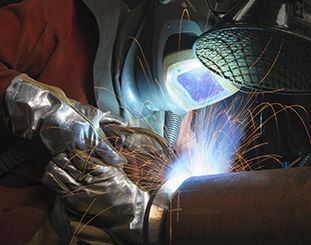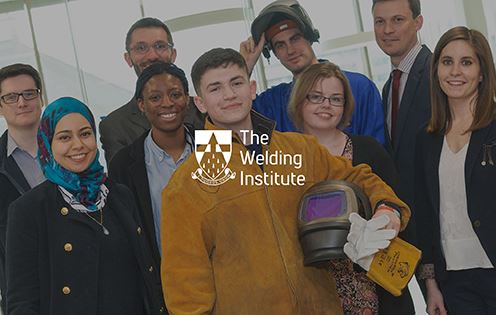|
What is Welding? - A Definitive Guide
What is Welding?
 Welding is a process where two or more parent materials are joined through heat and pressure. Heat and pressure can be applied together or individually to form a weld.
Welding is a process where two or more parent materials are joined through heat and pressure. Heat and pressure can be applied together or individually to form a weld.
The parts being joined through welding are known as the ‘parent materials,’ the material added to help create the join is known as the ‘filler’ or ‘consumable’ and the result/final form is called the ‘welded joint’ (the final weld may also be referred to as a weldment).
Different welding processes are carried out to produce high quality welds by joining metals, wood and other materials.
Choosing consumables/filler material?
When choosing the consumables or fillers, it is important to consider the materials that you are joining/welding together. There are two types of welds:
Homogenous welds – this is where the consumables or fillers being used are similar in composition to the parent materials.
Heterogeneous welds – this is where the consumables or fillers being used are dissimilar in composition to the parent materials.
How does welding work?
When welding with heat, the parent material (often a base metal) can either be used independently or with the presence of a consumable or filler material (often filler metals) to produce a weld pool consisting of molten material, which cools to form a weld.
Pressure welding involves applying a specific level of pressure onto a parent material to form a weld.
Both welding processes can be performed with or without the presence of each other, depending on the material being welded. Some welding processes require both heat and pressure whilst others only require one of them.
Types of Welding Processes:
TWI has significant experience in welding and joining technology research and has been responsible for developing the production and adoption of new techniques. The techniques that TWI have developed extensive technical knowledge on are:
Arc Welding
Arc welding is a fusion welding process that is used to join metals. The process involves an electric arc from an alternating current (AC) or direct current (DC) to create heat that melts the material (usually the base metal) at the join between the parent materials. This technique may also use a filler material (or filler metal). To find out more about arc welding click here.
The arc welding technique has different variations including; tungsten inert gas welding (TIG), metal inert/active gas welding (MIG/MAG), manual metal arc (MMA) welding, submerged arc welding (SAW), plasma arc welding, hybrid laser-arc welding, and underwater welding.
Electron Beam Welding
Electron beam welding (EBW) involves using a beam of high velocity electrons to join parent materials. The kinetic energy of the electrons creates heat when they come into contact with the parent material(s). This causes the parent material to melt and form a join. This process is carried out in a vacuum to help prevent the dissipation of the beam. The technique is often used for the joining of thick/larger materials. TWI’s involvement in electron beam welding in relation to industry includes design, selection, troubleshooting, trialling, application and development. TWI’s work includes the research of in-vacuum-chamber electron beam (EB) welding, out-of-vacuum-chamber electron beam (EB) welding, non-additive processing, EB additive manufacturing, advanced equipment and QA solutions.
Friction Welding
This welding process joins parent materials through the use of mechanical friction and can be applied to materials such as stainless steel, aluminium and wood. This process does not need a filler material and can be carried out with or without it. Variations of friction welding include friction stir welding (FSW), linear friction welding (LFW) and rotary friction welding (RFW).
Laser Welding
Laser beam welding is a welding process used for the joining of metals, thermoplastics and other materials. The laser creates a concentrated beam of heat, therefore allowing the technique to be used in narrow and deep welds at high volume rates. This process differs to electron beam welding because it does not need to be carried out in a vacuum. Laser welding is used in different industry sectors including power, automotive, medical, shipbuilding and aerospace. TWI’s technical knowledge includes; laser welding, hybrid laser-arc welding, laser brazing, laser cutting, laser surface engineering, laser processing of polymers, decommissioning using lasers, laser metal deposition (LMD), selective laser melting (SLM) and laser process monitoring for quality control and assurance.
Resistance and Mechanical Welding
Resistance welding is a welding process where metals are joined through the application of pressure and the passing of a current for a specific length of time. The heat causes the parent materials to melt at the joint as the pressure causes the parent materials to join together and form a weld. Techniques that TWI have expertise in include resistance spot welding, resistance projection welding, resistance seam welding, flash and resistance butt welding, high frequency welding and micro and miniature resistance welding. Click here to see what services TWI offer in mechanical fastening.
 Welding and Membership of The Welding Institute
Welding and Membership of The Welding Institute
Although The Welding Institute offers Professional Membership to all engineers, our expertise in the welding and joining industry are a significant part of the Institute’s history (view the Institute’s history here). We are still the leading professional body for the registration of welding and joining personnel and can offer over 70 years of experience in welding and joining. Benefits of this expertise includes:
- Technical knowledge from TWI’s library and online resources
- Welding engineer volunteers that are involved in mentoring your membership application process
- Joining Processes Technical Group Meetings that look at the applications of different welding and joining processes (click here to view all of our events)
- TWI’s Weldasearch
- A technical enquiry service
- Welding and Cutting Journal
- 5% discount on all TWI Training and Examination courses
Welding Career Development – TWI Training and Examinations
One of our main benefits as an Institute is being able to offer a 5% discount on all TWI Training and Examination courses to our Members. Why not consider come of the following courses?
They also offer a range of Welding Appreciation courses including:
TWI Training and Examinations also offer a range of CSWIP Welding Inspection Courses. Visit their Welding Inspection page to find out more about this internationally recognised certification.
